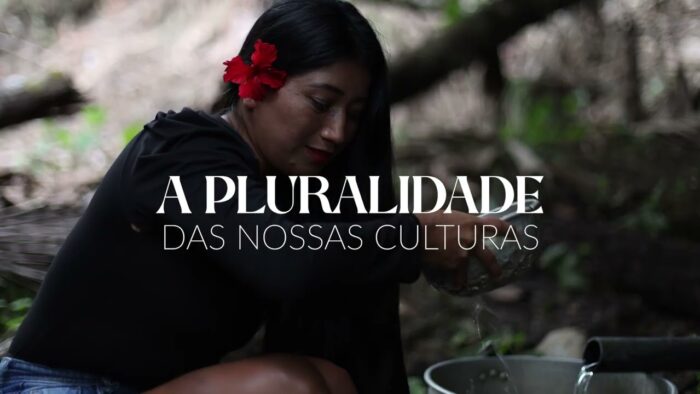Organization: Plan USA
Country: Colombia
Closing date: 17 Apr 2017
Purpose and scope
Lazos de Agua 2.0 is a new WASH program led by the FEMSA Foundation, the Coca-Cola Company, the Inter-American Development Bank and ONE DROP (the Conveners) that will serve as a powerful driver to support governments throughout Latin America and the Caribbean in their efforts to achieve universal access to sustainable WASH services. In Colombia, the Lazos de Agua initiative is partnering with Plan International to deliver sustainable WASH systems to communities in Tumaco.
The principal purpose of the diagnostic study is to provide the evidence base for a relevant and appropriate project design and provide key information to inform site selection and targeting in Tumaco, Colombia.
This ToR covers all three aspects of One Drop’s ‘ABC’ approach. The ABC approach is based on three complementary components designed to establish solid foundations on which targeted communities can achieve their full potential and create an enabling environment for change. The approach includes: ‘A’ (ACCESS) – improving access to safe, equitable, adequate and affordable drinking water and sanitation; ‘B’ (BEHAVIOR) – addressing the root causes and inadequate behaviors that hinder an enabling environment for sustainable access to WASH; and ‘C’ (CAPITAL) – aimed at accelerating access to WASH services through market-based strategies, the development of financial products for households and supply chains for WASH related products and services. A barrier analysis[1] will complement the work conducted in relation to Component B.
The specific questions to be answered in this ToR include:
- What is the overall water, sanitation and hygiene situation for the municipality of Tumaco, specifically related to ACCESS and CAPITAL? This includes interalia:
a. Identifying suitable rural and urban communities for implementation
b. Cost per beneficiary costings for proposed water and sanitation infrastructure
- What are the specific areas of greatest need for water, sanitation and hygiene improvements in Tumaco, specifically related to access and capital? This includes interalia:
a. Opportunities for growth of WASH-related businesses in urban areas particularly in relation to storage tanks, household treatment options, on-site sanitation emptying, cleaning services, bathroom construction. In-depth research to understand the challenges and opportunities for market-based WASH services development
b. Opportunities for directly paying for household WASH services (water, sanitation); feasibility of voucher systems and cash transfers
c. Review the determinants that impact on willingness to pay for WASH services
- What is the current level of knowledge, the existing attitudes and current practices related to water, sanitation and hygiene for high need groups in Tumaco, and what are the specific areas of greatest need for intervention?
a. What are the determinants relating to key behaviors that need to be addressed? What barriers are present that affect behavior change? What factors motivate adoption of these key behaviors?
- What design elements of a social art for behavior change strategy are most appropriate and effective given the socio-cultural context in Tumaco?
specific activities
In line with One Drop’s TOR guidance and Plan International USA’s approach, the specific activities of the consultants will include the following:
- Develop a detailed inception report for undertaking the full Diagnostic Study. To do this, the consultant/firm will:
· Conduct a literature review of Colombia-specific literature (peer reviewed and grey) and secondary data relating to WASH (related to the area of Tumaco). This preliminary step will inform the design of the following components of the diagnostic study i.e. to identify existing data sources and needs for primary data collection. A list of the reviewed documentation will be an expected deliverable
· Outline methodological approach, study design, existing data and literature sources and data gaps to drive the design of the diagnostic components.
· Include a full design for the diagnostic study components listed below.
- Conduct a WASH situational analysis which will provide an overview of the water, sanitation and hygiene situation for the municipality of Tumaco, specifically related to ACCESS and CAPITAL (as outlined in Q1 above). Activities include:
o Conduct secondary data collection on general demographic and contextual information, wealth quintile analysis, biophysical environment, institutional environment and governance, history of WASH interventions, education and health systems and issues, microfinance, WASH supply and demand.
o Identify existing data sources and needs for primary data collection to be carried out in the needs assessment. Conduct key informant interviews as necessary.
o Based on the situational analysis findings, provide recommendations for 1) a preliminary targeting approach for the project within the municipality and 2) a sampling approach within the municipality for the needs assessment.
- Conduct a WASH needs assessment that identifies specific areas of greatest need for water, sanitation and hygiene improvements in Tumaco, especially related to the ACCESS and CAPITAL components above. Please refer to the Annex for specific data collection needs. This will include:
o Conduct primary data collection at household level, to include: a) demographic, socio-economic data and feedback on community WASH infrastructure, and b) water supply, sanitation and hygiene facilities, technology options and costs.
o Conduct primary data collection at schools and health clinics on water supply and sanitation technology options and costs.
o Conduct primary data collection on the (approximate) number of beneficiaries that different technology options can serve in communities, schools, and health clinics, and the (approximate) life-cycle costs of these facilities.
o Collect and analyze water quality samples (according to Colombian government, the estimated cost is between $50 and $75 per sample at a commercial laboratory for basic analysis of approximately 17 or 18 common criteria), including surface and groundwater samples at as many sites as affordable within the budget.
-
Conduct formative research that will evaluate the current level of knowledge, the existing attitudes and current practices related to water, sanitation and hygiene in Tumaco and the specific areas of greatest need for intervention. This may include: quantitative and/or qualitative data collection related to current knowledge, attitudes, and practices on key behaviors at household level related to water, hygiene and sanitation, noting in particular gender equity and equality issues of relevance. This will include:
-
Conduct a barrier analysis to examine the key factors preventing or motivating stakeholder groups from adopting specific behaviors. The drivers behind those community members who adopt, are resistant to adopt, or who are ‘positive deviants’ in relation to new behaviors will be examined in detail. In carrying out the analysis, the consultant will conduct single gender and mixed gender group assessments (of the determinants of) agreed target behavior/s, by stakeholder group.
The following information, identified from an initial rapid assessment in Tumaco, points to the following illustrative listing of key behaviors for further study.
ACCESS
· Target behaviors: Individual practice in relation to safely managed water supply (i.e., HHWTS)
· Target group/s: Household heads; women caregivers (aged 16-45)
BEHAVIOR
· Target behaviors 1: Individual practice in relation to handwashing with soap at critical times
· Target group/s 1: Household heads; women caregivers (aged 16-45); children (aged 3-15)
· Target behaviors 2: Individual practice in relation to safely managed sanitation (i.e., open defecation, decentralized wastewater treatment)
· Target group/s 2: Household heads; women caregivers (aged 16-45); children (aged 3-15)
CAPITAL
· Target behaviors: Individual/household payment ($) of tariffs for household water
· Target group/s: Household heads
specific activities
The information below presents a list of deliverables from the ToR, against a set timeline
Deliverable 1: Inception report
· Detail: Includes literature review and bibliography, identification of data gaps, date sources and full design and methodology of diagnostic study
· Duration/Timeline: 2 weeks (following signing consultancy agreement)
Deliverable 2: Draft Diagnostic Study report
· Detail: Includes draft situational assessment, WASH needs assessment and formative research (incorporating barrier analysis). The report to be structured so that the narrative provides the following breakdown: ACCESS and CAPITAL;, BEHAVIOR (including barrier analysis)
· Duration/Timeline: 6 weeks in total, on-site.
Deliverable 3: Final Diagnostic Study report (in Spanish)
· Detail: As above, following feedback and review. Report structure includes: Executive Summary; Introduction and Background; Approach and Methodology; Findings; Conclusions; Recommendations; Annexes
· Duration/Timeline: 2 weeks (following feedback from Plan/One Drop)
Deliverable 4: PowerPoint presentation of study results (in Spanish)
· Detail: Includes high level summary of results for presentation to all project partners
· Duration/Timeline: 3 days (following agreement of final Diagnostic Study report)
Proposal submission details:
Applicants are expected to send a proposal including at a minimum the following:
· How they understand the terms of reference;
· How they intend to carry out the work;
· Their suitability for the work (previous relevant experience);
· Professional references (name, position, organization, contact information)
· Costs involved (in USD, all costs inclusive).
[1] Barrier Analysis is a rapid assessment tool used in behavior change (public health) projects. The purpose of the Barrier Analysis is to identify behavioral determinants, so that more effective behavior change communication messages, strategies and supporting activities can be developed.
How to apply:
Proposals should be addressed to: darren.saywell@planusa.org and tania.vachon@onedrop.org no later than Monday, April 17, 2017.
· Proposals should be submitted as Word documents, including ‘One Drop Diagnostic Study’ in the subject of the e-mail.
· Proposals are not expected to exceed a total of 3500 words (excluding cover page and table of contents).
· CVs of lead personnel can be included, but only as appendices, and will not count towards the word limit.
· A final selection of consultant/s is expected to take place by Friday, April 28, 2017.





